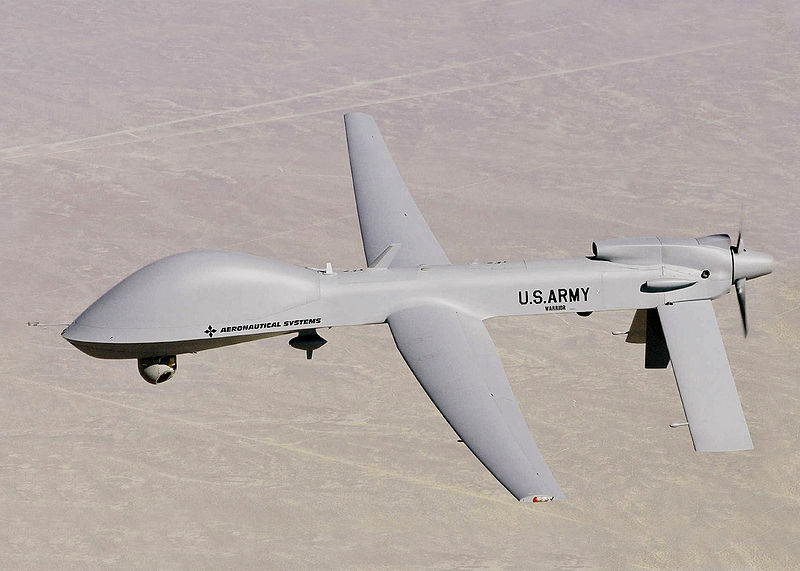How the White House Flung the Door Wide Open
by Tyler Cullis
It is a trope among foreign policy elites that the Obama administration lacks a coherent strategy for dealing with conflict and chaos in the Middle East and South Asia region. Few meanwhile seem to appreciate the most consequential of the administration’s policies there — the U.S. targeted killing program and the way it is changing the rules of the game in war.
While the U.S.’s targeting guidelines have been a continuing source of controversy, not least among human rights advocates, the fact that the administration’s use of killer drones in Pakistan and Somalia are changing the rules on when force can be deployed in the first place has largely flown under the radar. However, it is this development that might prove most troubling, as dozens of States stand prepared to acquire killer drones in the coming years.
As reported in The Washington Times, the U.S. intelligence community estimates that 87 countries are in possession of drones, and 26 of those have either purchased or are in the process of developing a drone akin in scope to the Predator. It is expected that a dozen or so of these countries are seeking to weaponize their drones and will succeed in short order. Further proliferation like this is a striking concern, but even more disturbing is the fact that States will be deploying lethal gadgets in a legal order undergoing dramatic flux and change, largely thanks to the novel conceptions of law the White House has employed to justify its drone program in Pakistan.
Unable to rationalize the cross-border use of drones while toeing the line of the law, the Obama administration at first ignored the legal repercussion of its drone policy. When pressed, it took an ad-hoc approach to the legal concerns underlying its targeting killing program, without careful consideration of the costs of upsetting and throwing into turmoil the rules and regulations that have governed the use of inter-State violence for more than six decades.
Last month, the United Nations released two draft reports on drones and drone warfare, which spoke to this problem. Following a recitation of the law governing the use of force and implying, but not finding, that the U.S. drone strikes in Pakistan fell afoul of this law, the Emmerson report noted that the U.S. had taken the position that the law of self-defense provided far greater scope for States to undertake cross-border action against non-State armed groups than commonly believed.
Under the U.S.’s preferred approach, the use of killer drones in Pakistan’s tribal areas would be a legitimate form of self-defense so long as Pakistan proved “unable or unwilling” to combat the non-State armed groups within its own borders. This contrasts with the traditional rule that self-defense can be triggered only after an armed attack by the State itself, and that cross-border incursions of the American kind in Pakistan can only be warranted upon the consent of the Pakistanis. Needless to say, the U.S. position has not proven popular amongst other countries.
However, the U.S. rule is one ripe for adoption, especially as other countries acquire the drone technology to make cross-border attacks relatively cost-free. In arguing for a more permissive legal regime, then, the Obama administration has opened the door wide for other countries to pursue their own “counter-terrorism” policies under the stamp of law. It is entirely unclear whether the administration intended this result, or whether it is simply a by-product of the White House’s race to defend its drone program from legal attack. Regardless, the legal argument is ill-considered.
Nowhere will this prove to be a more of a problem than in the Middle East and South Asian region. With the U.S. set to depart Afghanistan by the end of next year, there will soon be an intensified competition over the country’s future from regional neighbors, including Pakistan, India, China, Russia, Iran, and Tajikistan. More than a few have or are at present developing weapons systems for their drones and will not be hesitant to use Afghanistan as training ground for their new gadgets, much in the same way the U.S. did. This bodes ill for the future stability, if not integrity, of the war-torn country.
Drones could see especial use in a number of low-intensity, inter-State conflicts as well. India, which has a limited set of armed drones at present but is looking to purchase vast fleets of them, might well be inclined to deploy drones on its border with Pakistan in order to target hostile groups in Kashmir. Pakistan’s response to this, which it would almost certainly regard as a provocation, is yet to be seen, but it takes little imagination to see how the appeal of the drone — as a limited, low-intensity weapon — could incite a much larger and much deadlier conflict.
These are just two examples, but they demonstrate the point that, absent a more restrictive legal regime governing the use of force, killer drones will be deployed by more countries, and more often, than at present, with unforeseeable consequences. It is thus unfortunate that the Obama administration has pushed the law to evolve in just the opposite direction.
When asked early in his first term whether the war in Afghanistan was winnable, President Obama replied:
I think about [the Afghan War] not so much [as] do you lose a war…? I think about it more in terms of, do you successfully prosecute a strategy that results in the country being stronger rather than weaker at the end of it?
It is ironic, then, that the linchpin of the administration’s strategy in Afghanistan — the targeted killing program — might well invite a world that is more conflict-ridden and chaotic than the one that preceded it.






Who’s really running the show? Making laws that suit your needs of the moment, opens up that old “Pandora’s box”, so to speak. Or perhaps. “Too many cooks, spoil the soup”.